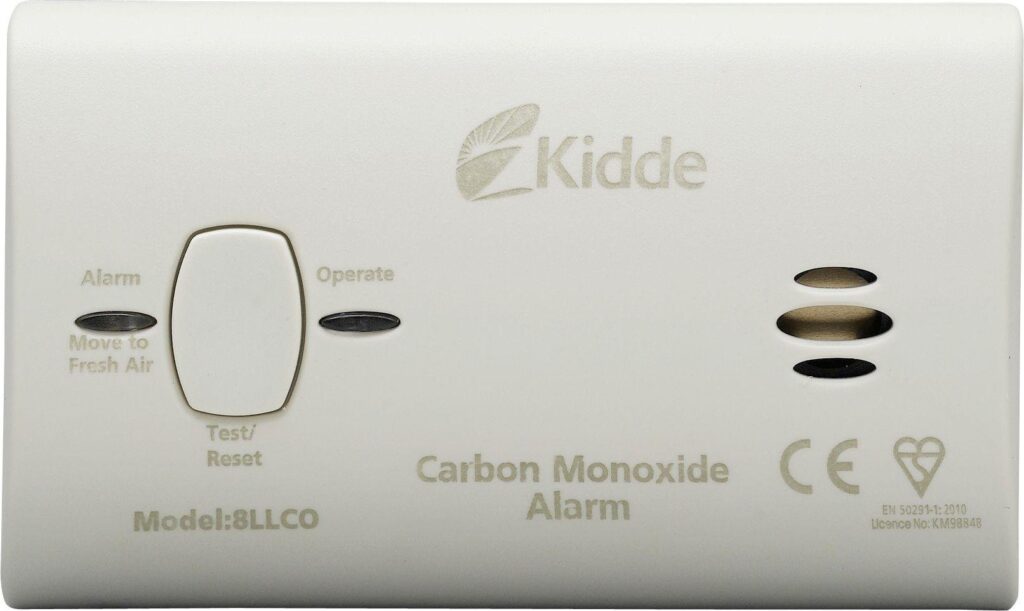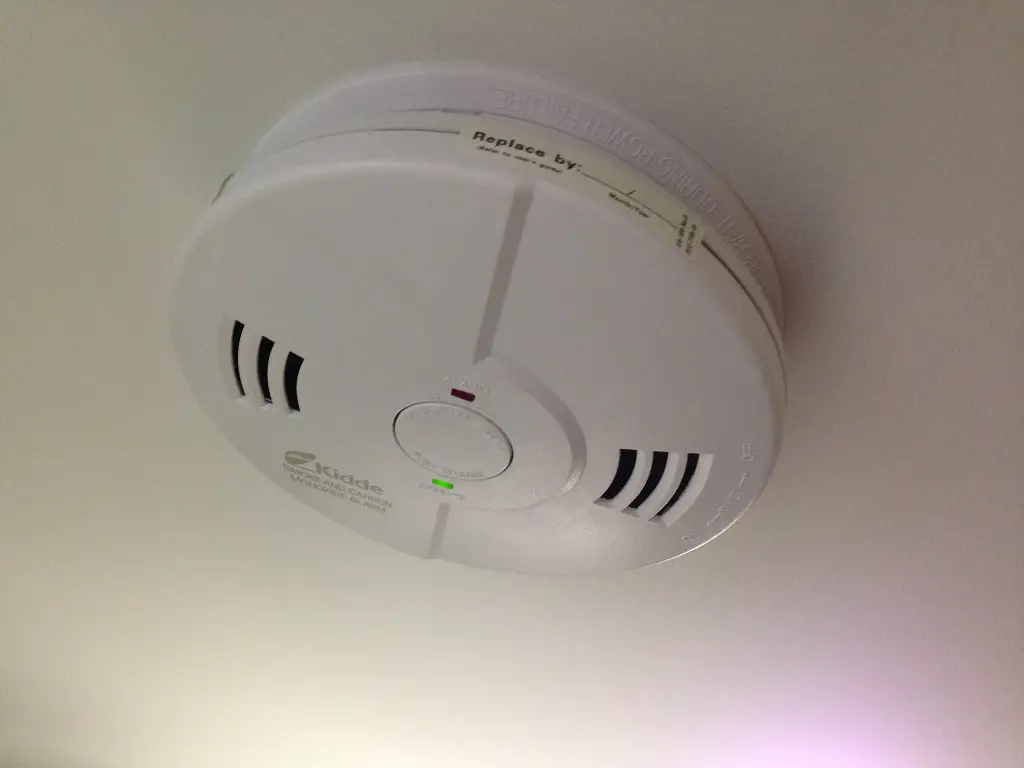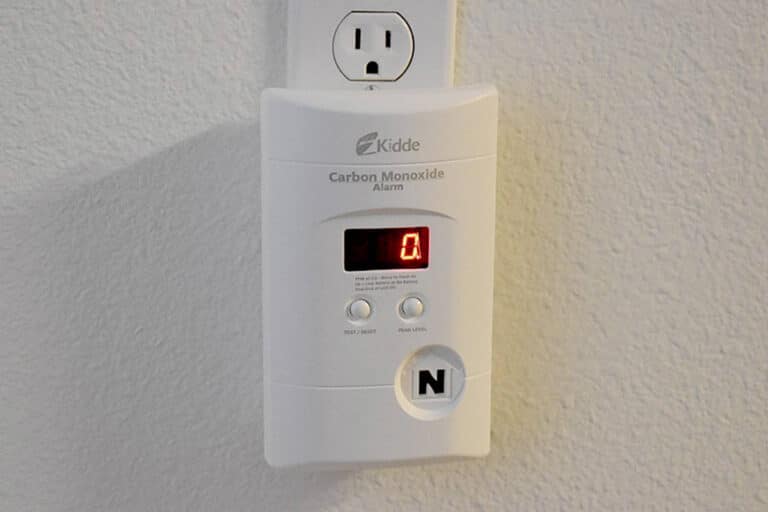Introduction
How To Change Battery In Carbon Monoxide Detector: Greetings and welcome to our comprehensive tutorial on how to effectively change the battery in your carbon monoxide detector. A carbon monoxide detector is a critical device for safeguarding your home against the silent threat of carbon monoxide poisoning. These detectors work tirelessly to monitor the air quality and provide an early warning in case of any hazardous gas buildup. Always follow the manufacturer’s instructions and safety guidelines while performing any maintenance tasks on your carbon monoxide detector.
To ensure your detector’s uninterrupted functionality, regular battery replacement is essential. Throughout this guide, we will provide you with clear, concise instructions to navigate the battery replacement process smoothly. It’s important to note that each carbon monoxide detector may have slightly different designs and features, so it’s recommended to consult your specific device’s manual before proceeding.
Let’s dive into the details of how to change the battery in your carbon monoxide detector and uphold the safety of your household. Carbon monoxide is a colorless, odorless gas that can be extremely dangerous if not detected promptly. Carbon monoxide detectors are essential safety devices designed to alert you when elevated levels of this gas are present in your home. Regular maintenance, including battery replacement, is crucial to ensure the proper functioning of these detectors. In this guide, we will walk you through the step-by-step process of safely changing the battery in your carbon monoxide detector, helping you maintain a secure living environment for you and your loved ones.

When should I replace the battery in my carbon monoxide detector?
How often should I change my smoke and carbon monoxide detector batteries? Every six months. The best way to remember it to change them when we set our clocks back and move them forward for Daylight Savings Time.
The first consideration is the battery’s lifespan. Alkaline batteries, which power most CO detectors, have an average lifespan of 1 to 3 years. However, it’s important to check the manufacturer’s recommendations for your specific model, as battery life can vary. Some advanced detectors might even have longer-lasting lithium batteries.
Low-battery indicators are standard on modern carbon monoxide detectors. These warnings will sound off or flash lights to let you know when the battery is getting low. If your detector has a low battery alert feature, don’t ignore it—replace the battery promptly to ensure continuous protection.
Regularly testing your carbon monoxide detector is an essential practice to ensure it’s functioning correctly. Use the device’s test button to simulate a CO alarm and confirm that both the detector and battery are working as expected. If the test fails or if the device doesn’t emit a loud, clear sound, it’s time to replace the battery.
Some homeowners opt to change the batteries in their carbon monoxide detectors during daylight saving time changes. This biannual ritual serves as a simple way to remember this vital task and synchronize it with other household maintenance activities.
If your carbon monoxide detector starts beeping irregularly—outside of the low battery alert—it might signal that the battery is running low. Investigate the cause of the beeping, and if it’s related to the battery, replace it immediately.
What kind of battery for carbon monoxide detector?
9-volt batteries
Most smoke and carbon monoxide detectors run on 9-volt batteries, although there are some models that require AA or AAA batteries.
Alkaline batteries are one of the most common choices for carbon monoxide detectors. They are affordable, readily available, and provide a reliable power source. These batteries have a decent shelf life and can last anywhere from 1 to 3 years, depending on usage and the specific detector model. They are suitable for most standard carbon monoxide detectors and are compatible with various brands.
Lithium batteries are an advanced option that offers several advantages over alkaline batteries. They have a longer lifespan, often lasting up to 5 years or more. This longevity can be particularly beneficial for homeowners seeking less frequent battery replacements. Lithium batteries are also less prone to leakage, making them a safer choice for sensitive electronic devices like carbon monoxide detectors.
Rechargeable batteries are an eco-friendly alternative to disposable batteries. They can be reused multiple times, reducing waste and saving you money in the long run. However, it’s important to ensure that the carbon monoxide detector you have is compatible with rechargeable batteries, as not all models can accommodate them.
Also, keep in mind that rechargeable batteries may require more frequent charging than replacing traditional batteries. Always consult the manufacturer’s guidelines for your specific carbon monoxide detector. Some detectors might have specific battery requirements or recommendations to optimize performance and maintain the device’s warranty.
How long do carbon monoxide batteries last?
6 months
If your carbon monoxide detector has replaceable batteries, they should be changed at least every 6 months. Although you replace the batteries, carbon monoxide alarms don’t last forever.
Alkaline Batteries: Alkaline batteries are widely used due to their affordability and availability. On average, these batteries can last anywhere from 1 to 3 years, depending on the frequency of detector tests, the detector’s power consumption, and the manufacturer’s specifications.
Lithium Batteries: Lithium batteries are known for their longer lifespan compared to alkaline batteries. They can provide power to your carbon monoxide detector for around 5 years or more, making them an attractive choice for those seeking less frequent battery replacements.
Environmental conditions can affect battery performance. Extreme temperatures, both hot and cold, can impact battery chemistry and lead to reduced lifespan. Additionally, humidity and moisture can cause corrosion and decrease battery efficiency.
Many carbon monoxide detectors are equipped with low battery alerts, which signal when the battery is running low on power. This feature is designed to ensure that you replace the battery before it becomes completely depleted, maintaining the functionality of the detector.
The quality of the battery itself also matters. Higher-quality batteries tend to have more consistent performance and may last longer than lower-quality alternatives.
Always refer to the manufacturer’s guidelines for your specific carbon monoxide detector. They often provide information on the recommended battery type and expected battery lifespan. Adhering to these recommendations can help you make informed decisions about battery replacement.
How do I stop my carbon monoxide detector from beeping?
Reset your Carbon Monoxide Detector
Make sure a battery is connected, or the power is on before starting the reset process. First, look for a button called ‘silence’ or ‘reset’. Hold this button down for 10 or more seconds. Release the button, and the LED lights should blink or turn back on.
The first step is to determine the reason behind the beeping. Carbon monoxide detectors have different beep patterns for different alerts. The most common causes include low battery alerts, end-of-life alerts, and actual detection of elevated carbon monoxide levels. Carefully listen to the beeping pattern, as it can provide valuable information about the issue.
If the beeping is a series of short, intermittent beeps, it’s likely a low battery alert. In this case, replace the battery with a fresh one, following the manufacturer’s guidelines for the correct battery type and replacement procedure. Once the new battery is installed, the beeping should stop.
Carbon monoxide detectors have a finite lifespan, typically around 5 to 7 years. If your detector is approaching the end of its life, it might emit a specific pattern of beeps. In this case, it’s recommended to replace the entire detector with a new one to ensure continued protection.
If the beeping pattern is continuous and consistent, your detector might be alerting you to the presence of elevated carbon monoxide levels in your home. This is a serious matter. Leave the premises immediately and call emergency services. Do not attempt to stop the beeping until you’re in a safe location.
How many batteries does a carbon monoxide detector use?
This Carbon Monoxide Sensor takes 2 CR123A batteries and the typical battery life for the sensor is 3-5 years. Rotate the body counterclockwise to remove it from the back casing. Slide open the battery compartment to replace the 2 AAA batteries on the back of the body.
Many carbon monoxide detectors are designed to operate on a single battery. These detectors typically use a 9-volt battery or AA batteries. A single-battery setup is straightforward and convenient, requiring the replacement of just one battery when it becomes depleted. The frequency of battery replacement depends on the battery type and the manufacturer’s recommendations.
Certain models of carbon monoxide detectors utilize two batteries for increased power and reliability. This design may be more common in detectors with advanced features or those intended for larger spaces. Dual-battery detectors often use AA or even AAA batteries. Having two batteries can extend the detector’s overall battery life, reducing the need for frequent replacements.
Some modern carbon monoxide detectors are equipped with built-in, non-replaceable batteries. These detectors are designed to function for the entire lifespan of the device without needing battery changes. When the battery nears the end of its life, the entire detector is replaced.
Hardwired carbon monoxide detectors are directly connected to your home’s electrical system, often with a backup battery for power continuity during outages. These detectors use the electrical grid as their primary power source and employ batteries as secondary power sources. The number of backup batteries depends on the model and manufacturer, but it’s usually one or two.
Why does my carbon monoxide detector need a battery?
Battery-operated CO alarms provide continuous monitoring of CO levels, even during power outages. However, it’s important to make sure you replace your unit’s battery when necessary since battery-powered alarms don’t have a backup source of power.
Carbon monoxide detectors are in constant operation, monitoring the air for any signs of elevated CO levels. Unlike other appliances that are plugged into electrical outlets, detectors must remain operational even during power outages. Batteries provide the necessary power backup to ensure that the detector remains functional and alerts you to potential dangers at all times.
By using a battery as an independent power source, carbon monoxide detectors are not reliant solely on the home’s electrical system. This is essential because CO leaks can occur during power outages, such as those caused by storms or equipment failures. Having a battery-powered detector ensures that you remain protected even when the electricity is temporarily unavailable.
Batteries enable the portability of carbon monoxide detectors. This is especially important if you are using a battery-powered, standalone detector that can be placed in different locations within your home. The portability allows you to test different areas and identify the source of the CO leak more effectively.
In the event of a carbon monoxide detection, the detector needs to emit a loud, audible alarm to alert occupants to the danger. This alarm function requires a power source, and batteries provide the necessary energy to produce the alarm sound.
Why is my carbon monoxide detector beeping?
Consistent Chirping
If your carbon monoxide alarm is chirping or beeping once every 60 seconds, it may signify: Low Battery – The carbon monoxide batteries need to be replaced. End of Life Warning – Seven years after initial power up, a Kidde CO alarm will begin chirping every 30 seconds.
One of the most common reasons for carbon monoxide detector beeping is a low battery. Many detectors are designed to emit a distinct beep pattern to signal that the battery needs replacement. This alert is crucial to ensure that your detector remains operational and capable of detecting CO levels accurately.
Carbon monoxide detectors have a finite lifespan, usually around 5 to 7 years. If your detector is nearing the end of its life, it might emit a specific pattern of beeps to alert you that it needs replacement. These alerts indicate that the sensor within the detector has reached the end of its effective life span.
In some cases, the beeping might signal a malfunction within the detector itself. If the sensor responsible for detecting carbon monoxide levels becomes faulty, the detector might interpret it as a potential CO leak, triggering the beeping sound.
Perhaps the most serious cause of beeping is the detection of elevated carbon monoxide levels in your living space. Carbon monoxide detectors are designed to emit a loud, continuous alarm when CO levels become dangerous. If your detector is emitting this type of beeping, it’s essential to treat it as an emergency. Evacuate the premises immediately, and call emergency services to investigate the cause of the carbon monoxide leak.
Do home carbon monoxide detectors expire?
Carbon monoxide detectors last between five and seven years. The recommendation is to replace them every five years because their ability to detect carbon monoxide is questionable after that point.
While carbon monoxide detectors don’t exactly “expire” in the traditional sense, they do have a recommended lifespan set by manufacturers. Typically, the lifespan of a carbon monoxide detector ranges from 5 to 7 years. After this period, the sensors within the detector may start to degrade, leading to reduced accuracy and potentially slower response times.
The sensors within a carbon monoxide detector are responsible for detecting CO levels in the air. Over time, these sensors can become less sensitive or even malfunction due to exposure to environmental factors, dust, contaminants, and normal wear and tear. As a result, the detector’s ability to accurately detect and alert to dangerous CO levels may diminish.
Modern carbon monoxide detectors often come with advanced features, such as digital displays, wireless communication, and interconnected systems. These features can contribute to more complex wear and tear over time, potentially affecting the overall functionality of the detector.
Some carbon monoxide detectors are designed to emit end-of-life alerts when they approach the manufacturer’s recommended lifespan. These alerts are intended to notify you that the detector’s sensors are reaching the end of their effective operation and that the device should be replaced for continued safety.

Conclusion
Remember, safety always comes first. Before attempting to change the battery in your carbon monoxide detector, consult the manufacturer’s manual for specific instructions that may apply to your model. Always handle batteries with care and dispose of old batteries properly. Additionally, take a moment to test your detector after the battery replacement to ensure it is functioning correctly and providing the protection your household needs.
By staying vigilant and proactive in maintaining your carbon monoxide detector, you are taking a crucial step toward creating a safe and secure living environment for yourself and your loved ones. Stay informed, follow safety precautions, and keep your home protected from the potential dangers of carbon monoxide.
By following the steps provided in this guide and adhering to the manufacturer’s recommendations, you’re not only ensuring the continued accuracy of your detector but also contributing to the safety and peace of mind within your home. Regularly changing the battery, testing the detector, and keeping it free from dust and debris are all vital components of maintaining its efficacy.

